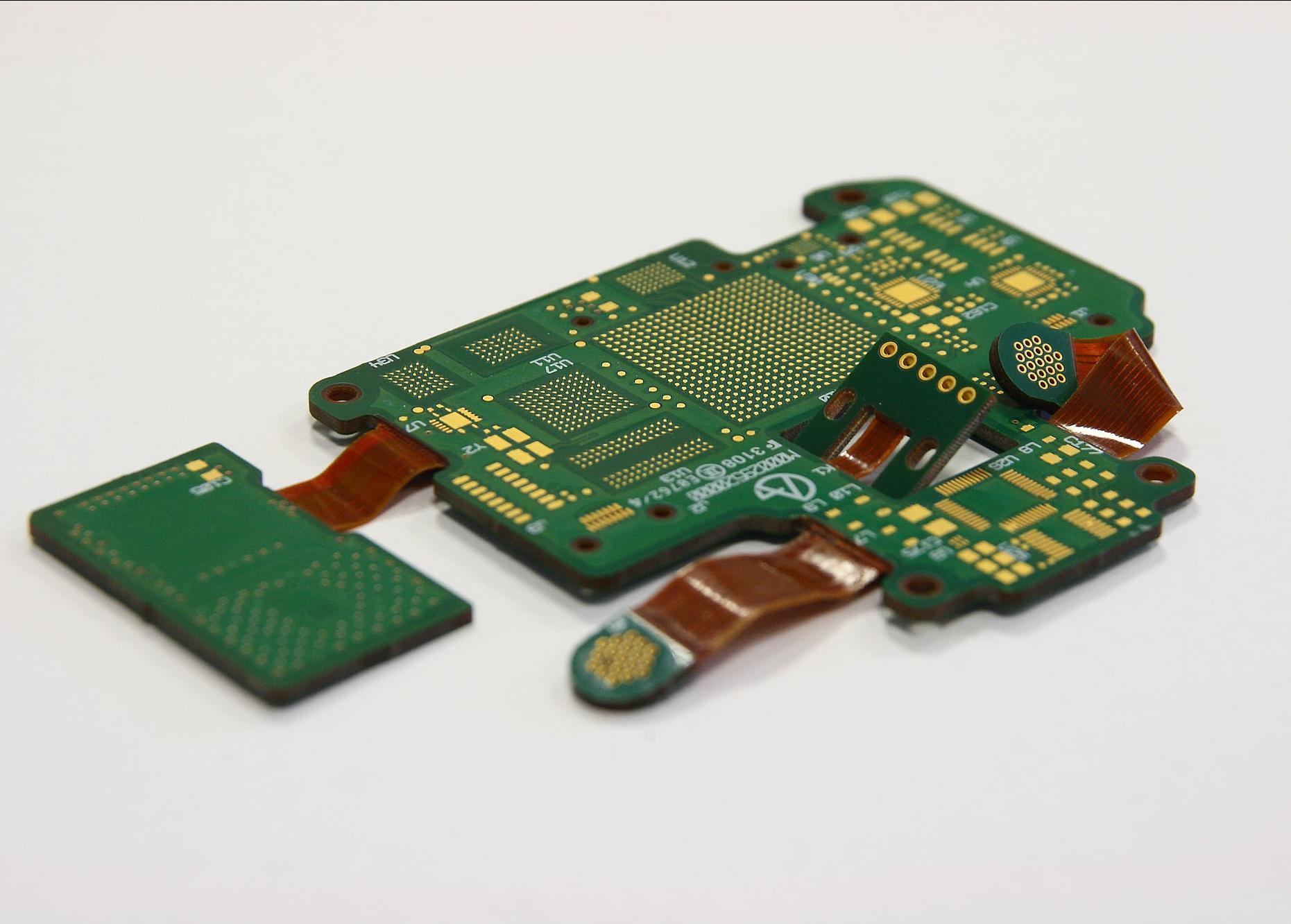Flexible and Flex-Rigid
Flexible and Flex-Rigid Printed Circuit Boards.

Flexible and flex-rigid printed circuit boards, unlike rigid PCBs, can bend, twist and fold.
They are intended for dynamic applications, as an electro-mechanical connection element between electronic parts called upon to bend hundreds of thousands of times. They can also be used in static applications, where several rigid portions of a single flex-rigid PCB are connected together by flexible parts, to maximise the number of electronic components in restricted spaces.
It is difficult to solder components and achieve a large number of interconnections on simple flexible products. One solution is to use a stiffener. Part of the circuit becomes rigid, to facilitate additions and soldering on components while increasing the number of interconnections. However, a stiffener is not usually part of a printed circuit board. In flex-rigid PCBs, on the other hand, the rigid parts are also part of the circuit board.
In recent years the use of flexible and flex-rigid PCBs has grown exponentially because the benefits have been understood, including:
- the possibility of reducing the necessary space thanks to the 3D “architecture”
- avoiding the use of wiring and connection connectors between different PCBs
- and, therefore, being able to have a single printed circuit board to manage and test
- minimising the risk inherent to soldering
- and reducing assembly costs.
Positive effects deriving from the use of flex-rigid PCBs also include:
- increased reliability and weight reduction
- increased signal integrity
- reduction in the loss of signal to the connectors
Moreover, flex-rigid printed circuit boards can also be made
- with mixed materials for RF applications and
- with HDI construction.
We are among the leading manufacturers of flex-rigid PCBs.
Our expertise and technological know-how allow us to offer you flex-rigid PCBs with stack-ups of any architecture.
